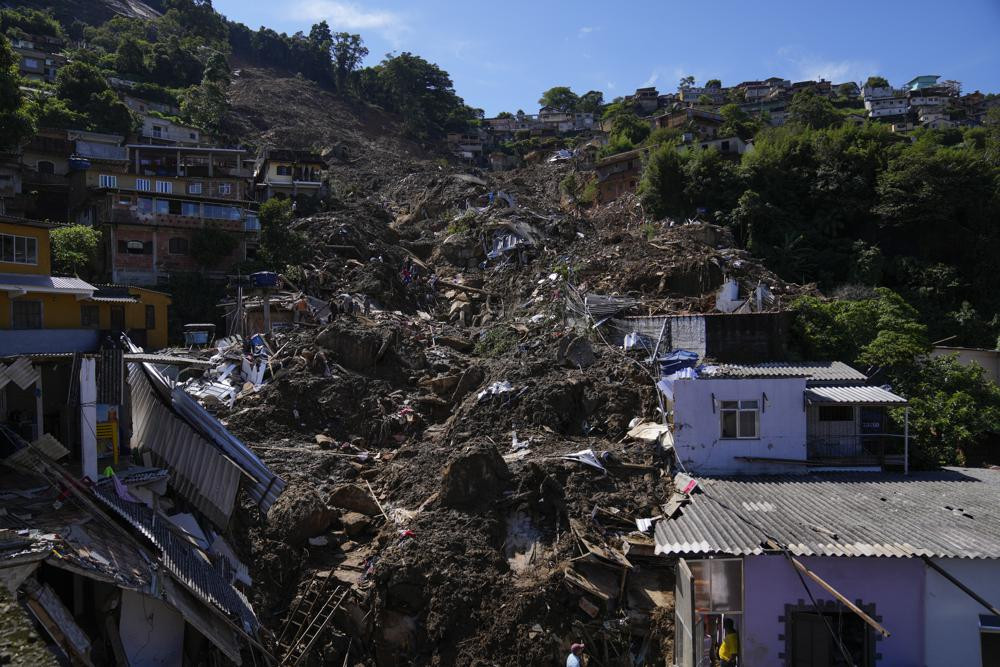Rio de Janeiro state’s government has confirmed 105 deaths from floods and mudslides that swept away homes and cars in the city of Petropolis. But even as families prepared to bury their dead, it was unclear Thursday how many bodies remained trapped in the mud.
Rubens Bomtempo, mayor of the German-influenced city nestled in the mountains, didn’t even offer an estimate for the number of people missing, with recovery efforts still ongoing.
“We don’t yet know the full scale of this,” Bomtempo said at a news conference Wednesday. “It was a hard day, a difficult day.”
Survivors were digging to find loved ones who disappeared after Tuesday’s landslides. Rio de Janeiro’s public prosecutors’ office said in a statement Wednesday night that it had compiled a list of 35 people yet to be located.
Footage posted on social media showed torrents dragging cars and houses through the streets and water swirling through the city. One video showed two buses sinking into a swollen river as its passengers clambered out the windows, scrambling for safety. Some didn’t make it to the banks and were washed away, out of sight.
On Wednesday morning, houses were left buried beneath mud while appliances and cars were in piles on the streets.
Petropolis, named for a former Brazilian emperor, has been a refuge for people escaping the summer heat and tourists keen to explore the so-called “Imperial City.”
Its prosperity has also drawn residents from Rio’s poorer regions and the population grew haphazardly, climbing mountainsides now covered with small residences packed tightly together, often in areas made more vulnerable by deforestation and inadequate drainage.
The state fire department said 25.8 centimeters (just over 10 inches) of rain fell within three hours on Tuesday -- almost as much as during the previous 30 days combined. Rio de Janeiro’s Gov. Claudio Castro said in a press conference that the rains were the worst Petropolis has received since 1932.
“No one could predict rain as hard as this,” Castro said. More rain was expected through the rest of the week, according to weather forecasters.
Castro added that almost 400 people were left homeless and 24 people were recovered alive. They were fortunate, and they were few.
Resident Rosilene Virginia’s brother barely escaped, and she considers it a miracle. Her friend hasn’t yet been found.
“It’s very sad to see people asking for help and having no way of helping, no way of doing anything,” Virginia told The Associated Press as a man comforted her. “It’s desperate, a feeling of loss so great.”
The stricken mountain region has seen similar catastrophes in recent decades, including one that caused more than 900 deaths. In the years since, Petropolis presented a plan to reduce risks of landslides, but works have advanced only slowly. The plan, presented in 2017, was based on analysis determining that 18% of the city’s territory was at high risk for landslides and flooding.
Local authorities say more than 180 residents who live in at-risk areas were sheltering in schools. More equipment and manpower was expected to help rescue efforts on Thursday.
Brazil’s President Jair Bolsonaro expressed solidarity while on a trip to Russia. Petropolis’ city hall declared three days of mourning for the tragedy.
Southeastern Brazil has been punished with heavy rains since the start of the year, with more than 40 deaths recorded between incidents in Minas Gerais state in early January and Sao Paulo state later the same month.

